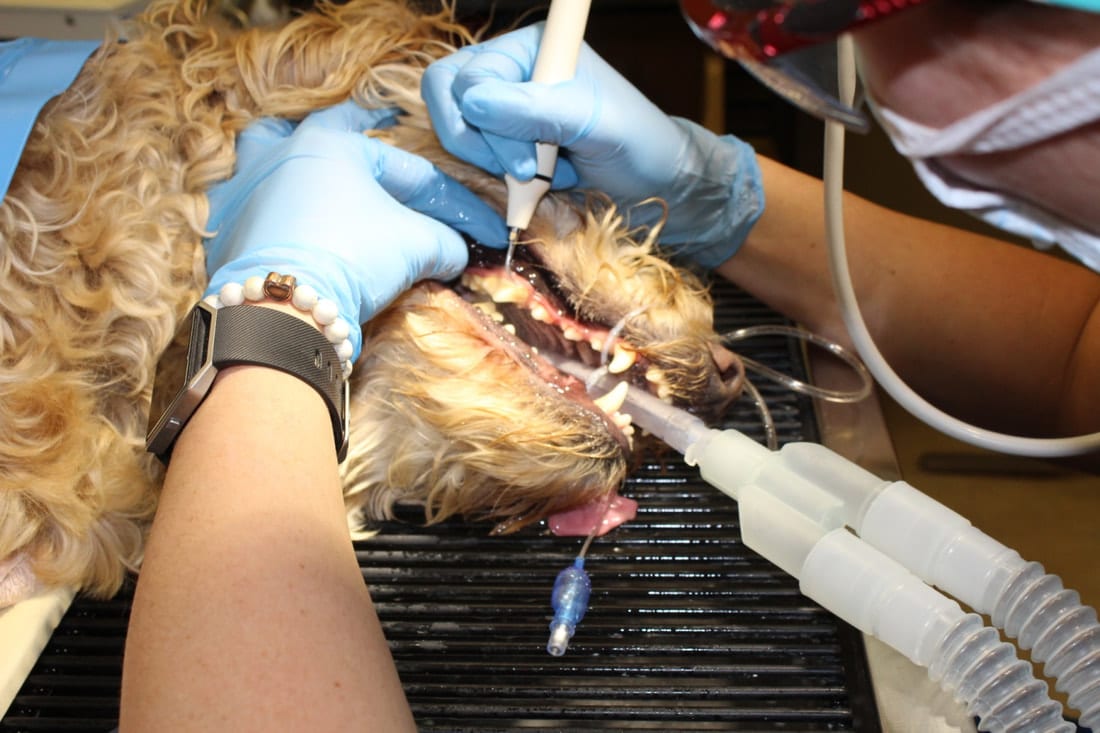
We have certainly heard a number of different responses over the years when clients are asked how often they brush their dog or cat’s teeth. One of our clients actually had an electric toothbrush for her dogs and she would use it to clean all three of her schnauzer’s teeth every day, twice a day, seven days a week! Needless to say, those schnauzers had the best “doggie breath” in town! More commonly, however, we get the opposite response to our dental inquiry. “You don’t really expect me to brush my cat’s teeth do you? It’s a miracle when I can get my seven year old son to do it!”
?Touché.
Brushing your pet’s teeth isn’t easy and it isn’t convenient, but it is extremely helpful and is crucial to their overall health and well-being. Can you imagine what your mouth would feel or smell like if you didn’t regularly brush your teeth? The thought is likely repulsive. So why should your pet’s mouth be any different? While we know it is unlikely that you’ll be able to brush your pet’s teeth daily, we recommend setting a goal of 2-3 times a week to help prevent plaque and calculi from building up and periodontal disease from occurring. In addition to brushing, there are dental chews and treats, dental wipes, dental enzyme food additives and even prescription dental diets to help keep Fido and Fluffy’s mouths healthy and dental disease under control. The Veterinary Oral Health Council website is another great resource for learning about dental health chews and treats. www.vohc.org/
Signs of dental disease in pets include red, inflamed or bleeding gums, bad breath, drooling, discolored teeth, broken teeth, plaque/calculi, swelling of the jaw or below the eye, trouble chewing, nasal discharge or sneezing. Sometimes the signs come and go and the level of severity can vary. In addition to the discomfort for your pet, bacteria accumulates in the mouth and can travel throughout the bloodstream affecting their kidneys, liver, heart and lungs.
The majority of dental disease in your dog or cat’s mouth occurs underneath the gum line. So even when you can’t see the problem, your pet may be suffering from some of the symptoms. The American Veterinary Medical Association estimates that 85% of dogs over the age of three have some level of periodontal disease. So unless you own a puppy or happen to have a schnauzer with an affinity for electric toothbrushes, we are likely talking to you!
We all know how busy life is. Keeping up with your pet’s dental hygiene isn’t always going to be your top priority. But it IS very important once you do get behind, that we schedule a full dental cleaning for your pet so we can address the symptoms and the dental disease and intervene before more serious health issues arise.
Dental cleanings in pets require anesthesia to be able to safely and effectively scale, polish and evaluate the teeth and entire oral cavity. The procedure is safe, effective and necessary once dental and/or periodontal disease has developed. Our clients are often amazed at the improvement in their pet’s overall activity, appetite, energy level and general zest for life after getting their teeth cleaned. It feels great to have a healthy mouth again! We even send home a sparkly new toothbrush and a toothpaste sample. It’s not quite the same as that toy chest your dentist let you pick from as a kid, but it’s a close second!
February is National Pet Dental Health Month. No matter where your pet’s dental hygiene is at this point, it’s the perfect time to make the pledge to improve it. Ask your DePorre veterinarian what recommendations they have for your pet’s dental hygiene plan.
